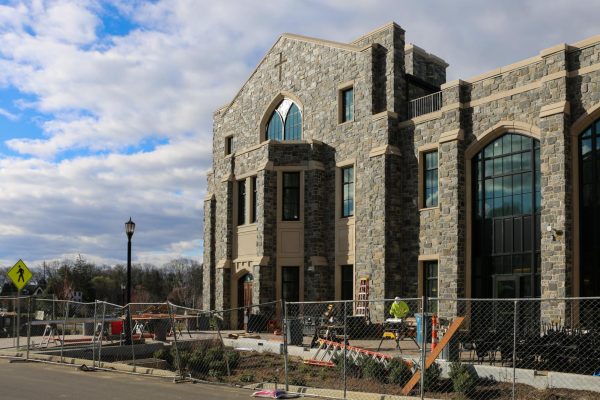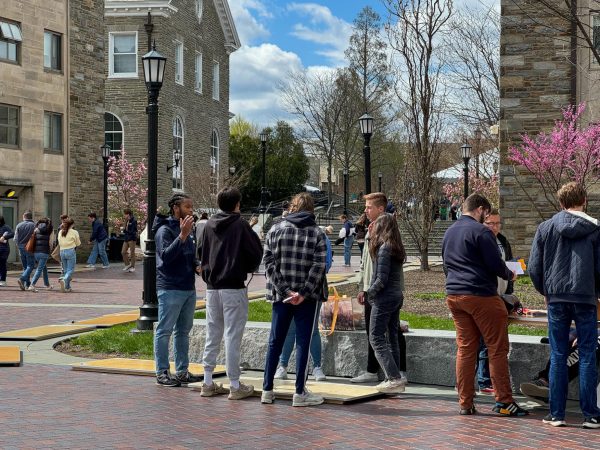Hurricane Ida Hits the East Coast
September 13, 2021
On Wednesday Sept. 1, the remnants of Hurricane Ida slammed the Mid-Atlantic area with rain and tornadoes, causing damage and historic life-threatening flooding.
As a category four hurricane at landfall, Ida left approximately one million people in the state of Louisiana without power and caused significant damage to homes and businesses in coastal areas of Louisiana, Mississippi and northwest Cuba.
While repairs of the Gulf Coast got underway, the Mid-Atlantic and Northeast were walloped by the system, which had de-intensified into a tropical depression. The storm spawned an EF-3 tornado in Mullica Hill, NJ, 21 miles away from campus as the crow flies. The tornado caused significant damage to several homes in the area and brought down trees. The National Weather Service Philadelphia Mount Holly confirmed that a total of seven tornadoes hit the Philadelphia region on Wednesday.
Five storm-related deaths have been reported across the state, and thousands of Pennsylvanians had to be rescued from floodwaters, according to an estimate by Pennsylvania Emergency Management Agency Director Randy Padfield. Fox29 Philadelphia reported that more than 10,000 people in areas affected by the storm were without power on Wednesday.
The Schuylkill River also flooded after the Philadelphia area received a little less than four and a half inches of rain, on average. The water level of the river was reported as being close to 16 feet, two feet more than the 14 necessary to deem the event a “Major Flood.” The city urged people to stay home via its Twitter account Thursday as flooding completely submerged and closed off I-676 and 1-76, along with many other roads. While I-76 has since reopened, I-767 is still closed at the time of writing.
SEPTA also was affected by Ida’s remnants, with some trains being significantly delayed and other routes being canceled completely. According to septa.org, stretches of both the Norristown High Speed Line and the Paoli Thorndale line were suspended as of Saturday afternoon.
As a response to the flooding, the American Red Cross has established four temporary shelters in the downtown area, and President Joe Biden said Thursday at the White House that FEMA assistance would be sent to Pennsylvania, along with New York and New Jersey.
President Biden also pointed out Ida’s connection to the rapidly warming climate, saying that Ida served as another reminder that “these extreme storms and the climate crisis are here.”
Other leaders in the area also pointed out the storm’s connection to climate change. Philadelphia Mayor Jim Kenney said Thursday that “extreme weather events like Ida are not isolated incidents. They are another indication of the worsening climate crisis.”
The connection Mayor Kenney and President Biden speak of stems from the Gulf of Mexico, where the storm formed. Ida was fueled by water that, according to the National Oceanic and Atmospheric Administration, may have been three to five degrees hotter than it was on average in the 1990s.
That difference in warmth is likely to blame for the higher intensity of hurricane systems in the past few years, as storms are able to intake greater energy from warmer water, which leads to higher velocities.
And while warm water led to the record intensity Ida pummeled Louisiana with, warmth in the air likely facilitated the downpour faced on the east coast. For every degree Celsius warmer the air is, it is able to hold seven percent more moisture, according to The Washington Post. This means that storms like Ida can hold more rainfall and affect areas further inland, areas that may not have robust flood prevention systems.
Supporters of the Senate-passed bipartisan $46 billion dollar infrastructure bill are using the hurricane as a forewarning of storms to come, as models project that hurricanes will only get stronger and more intense as the climate warms. The bill includes significant funding for building stronger fortifications against flooding in many different coastal regions. Similar funding was issued to Louisiana to assist the state with its levee-building project, completed in 2018. The federal levees around New Orleans have allowed the city to avoid any major flooding from both Hurricanes Ida and Laura, two of the strongest systems to hit the bayou since the 1850s.
The repairs to Philadelphia and surrounding areas currently have no set timetable, though according to the Philadelphia Inquirer, a “long cleanup” is expected for the city. Only time will tell how long the damage to the Southeastern Pennsylvania region will take to repair.













